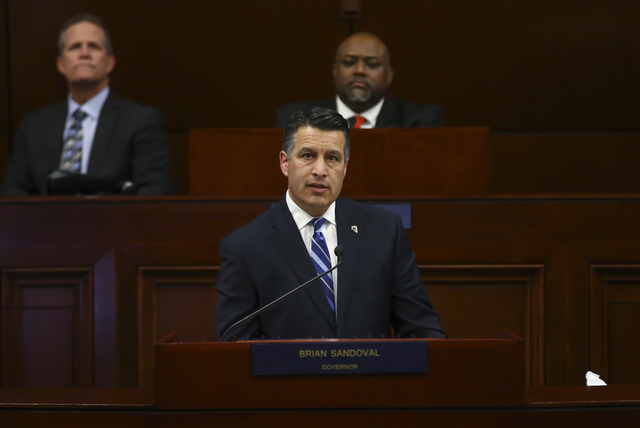Why Nevada always faces threat of education ‘cuts’

School district officials went before the Legislature’s tax committees last week and cried poverty.
Talk about déjà vu all over again.
I’m old enough to remember a governor telling us, “Improving our public education system must therefore begin with modernization, and modernization requires investment.” In proposing and successfully pushing a tax increase that would eventually top $1.5 billion, the largest in Nevada history, that governor assured us his plan would “modernize and transform Nevada for its next 50 years of success.”
You’re old enough to remember this, too. That’s what Gov. Brian Sandoval said and did in 2015.
Just two years later — Sandoval was off by only 48 years — school district officials are hyperventilating about what will happen if your property taxes aren’t raised by weakening property tax caps.
“There have been many cuts prior to us getting to this point,” said Rick Neal, chief operating officer of the Clark County School District. “There will be some significant, hard choices. There are things that have not been on the table before — when we started talking about cuts — that are actually coming to the table.”
All this talk about cuts is deeply misleading. CCSD projects its general revenue will increase this year by 2.5 percent to $2.3 billion. That’s a 15 percent increase from the $2 billion it received in Fiscal Year 2012. Sandoval also gave the school district more than $200 million in 2017 for specific programs, such as Zoom and Victory Schools.
After the 2015 tax increase, CCSD agreed to a new contract in January 2016 with its teachers that will cost taxpayers $135.5 million. It increased starting teacher pay by $6,300 — CCSD still has hundreds of openings — and bumped the top of the pay scale by a staggering $18,500.
Asked how he was going to pay for the contract, CCSD Superintendent Pat Skorkowsky offered a one-word response: “Cuts.”
CCSD is cutting some areas, not because it doesn’t have enough money, but because it can’t control its compensation increases. The state’s collective bargaining laws are to blame. And instead of fixing this bigger issue in 2015, Sandoval simply walled off funds for his pet categorical programs.
Turns out the New Nevada is like the Old Nevada — it just costs more.
On Friday, we’ll dive into Nevada’s broken collective bargaining system.
Victor Joecks’ column appears in the Nevada section each Monday, Wednesday and Friday. Contact him at vjoecks@reviewjournal.com. Follow @victorjoecks on Twitter.



















